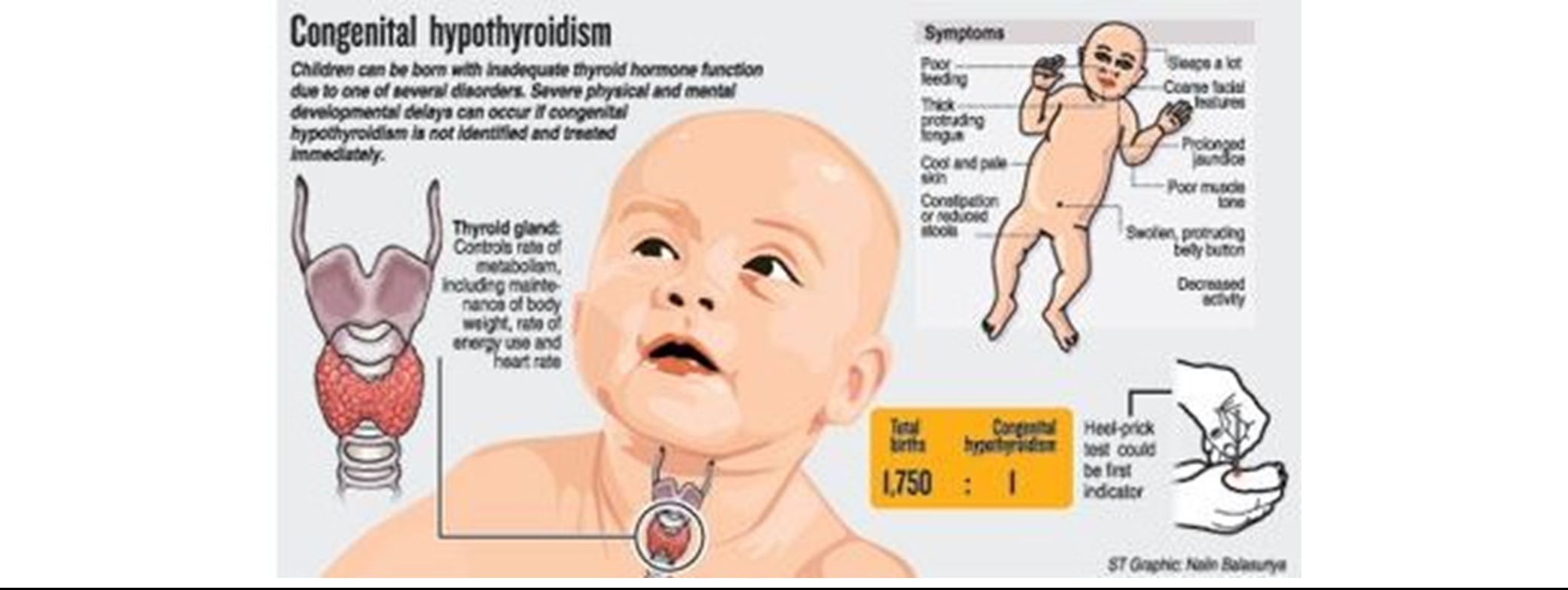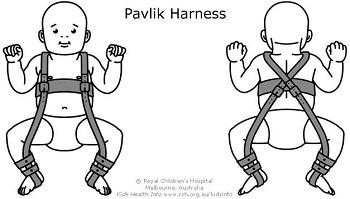A neonate is displaying mottled skin, has a large fontanel and tongue, is lethargic, and is having difficulty feeding. The nurse recognizes that this is most suggestive of which disorder?
Hypoglycaemia
Hypothyroidism
Hypocalcaemia
Phenylketonuria (PKU)
The Correct Answer is B
Hypothyroidism refers to an underactive thyroid gland that does not produce enough thyroid hormones. In newborns, this condition is known as congenital hypothyroidism. The symptoms mentioned—mottled skin, a large fontanel (soft spot on the baby's head), a large tongue, lethargy, and difficulty feeding—are characteristic of hypothyroidism inneonates.
Mottled skin can occur due to decreased circulation and low body temperature associated with hypothyroidism. A large fontanel and tongue are common physical features seen in infants with hypothyroidism. Lethargy and poor feeding are also typical signs of this condition.

Hypoglycaemia in (option A) is incorrect because it refers to low blood sugar levels and usually presents withdifferent symptoms such as jitteriness, tremors, and sweating.
Hypocalcaemia in (option C) is incorrect because it is low calcium levels and can manifest with symptoms like muscle cramps, twitching, and seizures.
Phenylketonuria (PKU) in (option D) it is incorrect because it is a metabolic disorder characterized by the inability to metabolize the amino acid phenylalanine, and it typically presents with different symptoms such as intellectual disability and a musty door to the skin.
Therefore, based on the symptoms described, hypothyroidism (B) is the most likely disorder in this neonate. It isimportant to consult a healthcare professional for a proper diagnosis and appropriate treatment.
Nursing Test Bank
Naxlex Comprehensive Predictor Exams
Related Questions
Correct Answer is C
Explanation
In the given scenario, the 6-year-old patient in skeletal traction is experiencing
pain, edema, and fever. These symptoms raise concerns about the possibility of an infection
at the site of traction. In such cases, the nurse should assess for warmth at the site of pain.
Increased warmth can indicate inflammation, which may be associated with infection. This
assessment finding would require further investigation and intervention, such as notifying the
healthcare provider and obtaining appropriate cultures or imaging studies.
Neurologic status in (Option A) is incorrect because assessing neurologic status, is important
but not the priority in this scenario. Neurologic status assessment is typically performed to
evaluate any neurovascular compromise resulting from the traction, but the presence of pain,
edema, and fever suggests a potential infection that requires immediate attention.
Range of motion of all extremities in (Option B) is incorrect because assessing the range of
motion of all extremities, is not directly relevant to the given symptoms and should not take
priority over assessing for warmth at the site of pain.
Blood pressure in (Option D) is incorrect because assessing blood pressure, is not directly
related to the symptoms of pain, edema, and fever in the context of skeletal traction. While
blood pressure is an essential vital sign, it does not provide specific information about the
potential infection at the site of pain in this situation.
Correct Answer is A
Explanation
A. The harness maintains the hips in flexion, abduction, and external rotation
The factor that the nurse should include when teaching a parent about the care of a newborn
in a Pavlik harness for hip dysplasia is that the harness maintains the hips in flexion,
abduction, and external rotation. The Pavlik harness is a commonly used device for the
treatment of developmental dysplasia of the hip (DDH) in infants. It is designed to hold the
hips in a position that promotes proper alignment and development.
The harness maintains the hips in flexion, abduction and external rotation in (Option B) is
incorrect. The Pavlik harness should not be removed with every diaper change. The harness
needs to be worn consistently as directed by the healthcare provider to ensure the
effectiveness of the treatment.
The harness is the only first step of treatment in (Option C) is incorrect. While the Pavlik
harness is an important step in the treatment of hip dysplasia, it is not the only step.
Additional treatments, such as bracing or surgical interventions, may be required depending
on the severity of the condition.
The harness in worn for 2 weeks in (Option D) is incorrect. The duration for which the Pavlik
harness is worn can vary depending on the individual case and the healthcare provider's
instructions. It is typically worn for several weeks to months, and the specific duration will be
determined by the healthcare provider based on the child's progress and response to
treatment.

Whether you are a student looking to ace your exams or a practicing nurse seeking to enhance your expertise , our nursing education contents will empower you with the confidence and competence to make a difference in the lives of patients and become a respected leader in the healthcare field.
Visit Naxlex, invest in your future and unlock endless possibilities with our unparalleled nursing education contents today
Report Wrong Answer on the Current Question
Do you disagree with the answer? If yes, what is your expected answer? Explain.
Kindly be descriptive with the issue you are facing.
